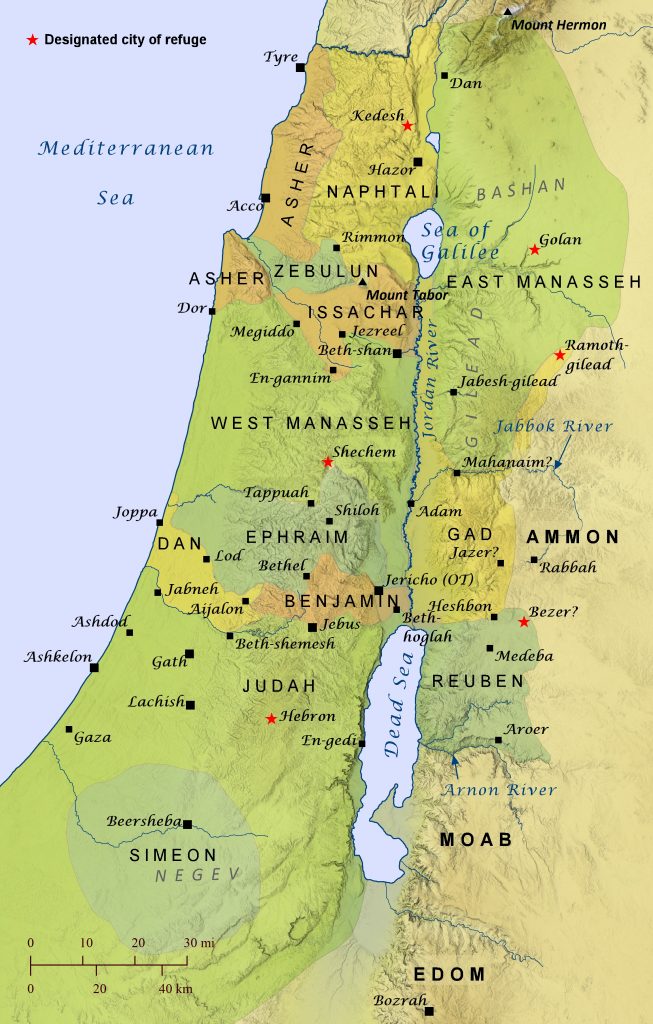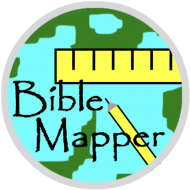When a dispute arose in the early church regarding the daily distribution of food, the Twelve apostles appointed seven men to ensure that this ministry was being done effectively and fairly. Philip, traditionally called “the Evangelist,” was one of the seven men chosen for this role (Acts 6:1-7). When persecution of believers first broke out in Jerusalem, Philip traveled to Samaria and conducted a powerful ministry there, and many Samaritans became believers (Acts 8:1-9). Later the angel of the Lord told Philip to take the road to Gaza, and along the way Philip met an Ethiopian royal official who was returning home after worshiping at the Temple. Philip helped him understand a passage in Isaiah 53 regarding the Messiah (Acts 8:26-38), and the official became a believer. Immediately after the Ethiopian official was baptized, the Spirit of the Lord carried Philip to Azotus, and then Philip preached in various towns as he traveled to Caesarea (Acts 8:39-40). The apostle Peter traveled to Lydda and healed a believer named Aeneas, and then he traveled to Joppa and raised a believer named Dorcas from the dead (Acts 9:32-43). After this Peter traveled to Caesarea to meet with a Gentile named Cornelius, who also became a believer (Acts 10).

The Conquest of Canaan: The Southern Campaign
Joshua 9-10
As news spread that mighty Jericho had fallen to the Israelites and that their intention was to conquer all of Canaan, fear grew among the Canaanites. To avoid being wiped out by the Israelites, the people of Gibeon, Kephirah, Beeroth, and Kiriath-jearim deceived the Israelites into thinking they lived far away, and they made a peace treaty with them (Joshua 9). Soon after this, several Amorite cities in southern Canaan joined together to attack the Gibeonites, so the Gibeonites appealed to the Israelites for help. Joshua led the Israelites on an all night march from Gilgal to Gibeon and defeated the Amorites. The Israelites continued to pursue the Amorites and eventually captured the cities of Makkedah, Libnah, Lachish, Eglon, and Debir (Joshua 10), and likely Jarmuth and Hebron as well (see Joshua 10:23).

⤓ download hi-res file 🔍 see in TimeGlider
The Ark of the Covenant Is Captured and Returned
1 Samuel 6:1-7:2
After the Israelites were defeated in battle by the Philistines between Aphek and Ebenezer, the elders of Israel chose to bring the Ark of the Covenant from Shiloh to the battle to ensure victory. But the Philistines defeated them again and captured the Ark. They carried it to Ashdod and placed it in the temple of Dagon. But while the Ark was there, the Lord destroyed the idol of Dagon and afflicted the people with tumors, so they sent the Ark to Gath. Again the Lord afflicted the people of Gath with tumors, so they sent the Ark to Ekron, where the same thing happened again. After seven months with the Ark, the Philistines returned the Ark along with a guilt offering of five gold tumors and five gold rats in the hopes that the afflictions would cease. They placed the Ark on a new cart hitched to two milk cows, which pulled the cart to the town of Beth-shemesh. Then Israelites came and took the Ark to Kiriath-jearim, where the Ark stayed for twenty years.

⤓ download hi-res file 🔍 see in TimeGlider
Tribal Allotments of the Promised Land
After the Israelites had conquered portions of the Promised Land and Joshua had grown old, the Lord directed him to divide the rest of the land among the tribes of Israel as their inheritance (Joshua 13-20). The eastern tribes had already been allotted their land under Moses’ leadership (Numbers 32), but they continued to help the other tribes drive out the Canaanites from land west of the Jordan River. The Lord also instructed the Israelites to designate several cities of refuge, where someone could flee for protection from an avenger if they accidentally killed someone (Numbers 35; Joshua 20).

Herod’s Building Projects
Many people are aware that Herod the Great, who ruled over Palestine in the decades leading up to Jesus’ birth, was a very wicked ruler. Over time he grew extremely paranoid that people were seeking to overthrow him (which was probably often true), and eventually he killed his wife and three of his sons. He also tried to kill the newborn Jesus after hearing that a rival king had been born in Bethlehem (Matthew 2). At the same time, however, Herod was arguably the most prolific builder of anyone who has ever ruled over the region. It is likely that the primary reason for Herod’s ambitious agenda was twofold: 1) to ingratiate himself to the Romans, to whom he dedicated many of his projects, and 2) to promote stability in the region and protect himself against rebellion. Herod built numerous structures in Jerusalem, in many towns throughout his kingdom, and even in cities far beyond Palestine, such as Antioch of Syria. In Jerusalem he completely renovated and expanded the Temple of the Lord, built a lavish palace for himself, and built various pools, public buildings, and citadels (including the Antonia Fortress). Elsewhere he built Roman administrative buildings, aqueducts, and pagan temples, and he fortified several desert refuges for himself, including the fortress of Masada.

